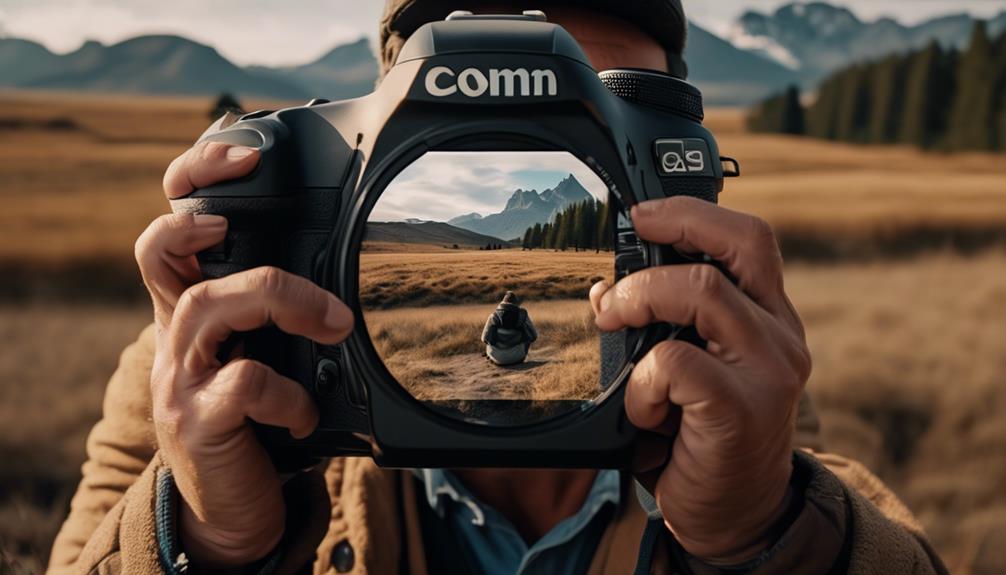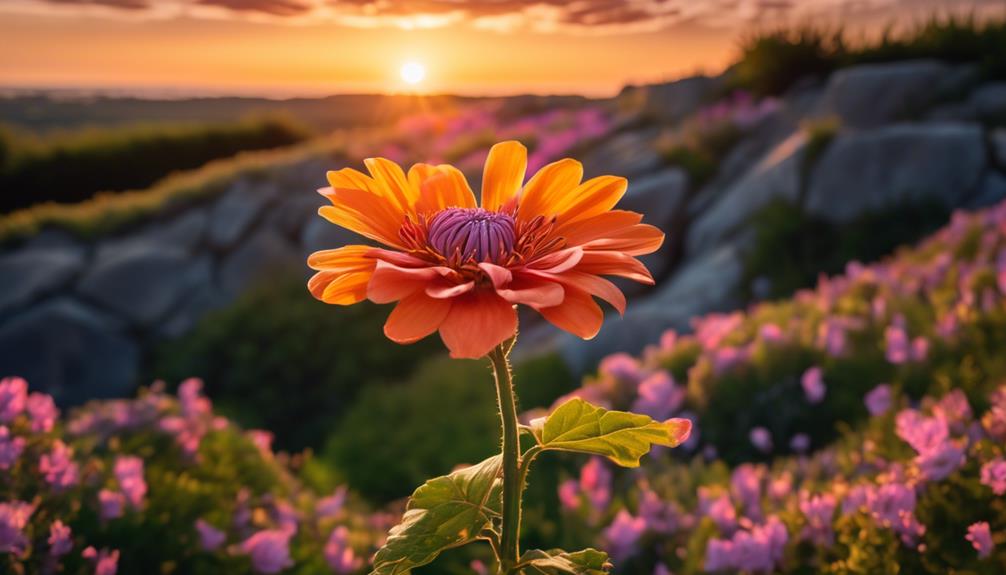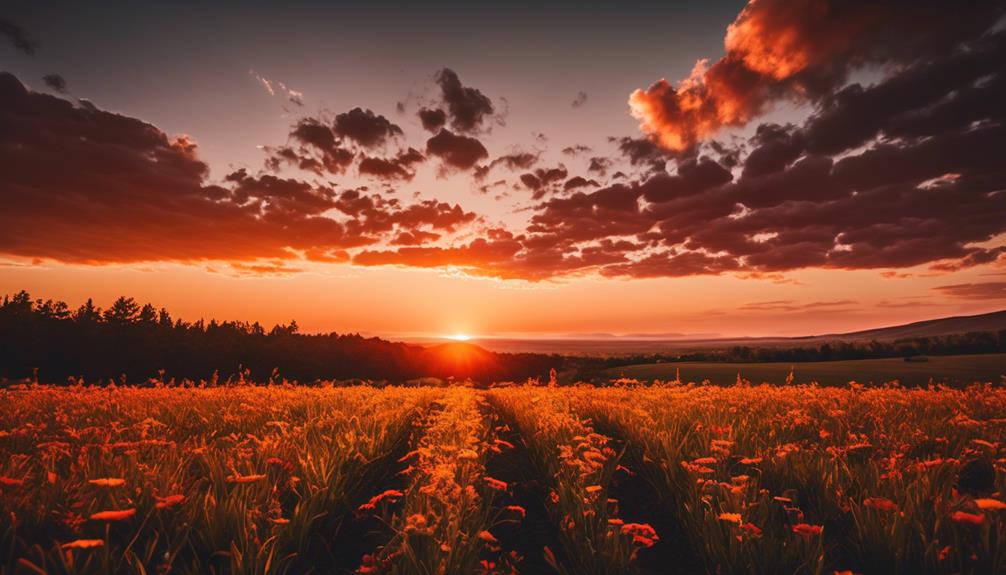Please note this post may contain affiliate links picked by me (Jay) that I have deemed may be of interest or relevant to you the reader of this.
These links do not affect the cost of the thing if you decide to purchase but i may get a little money if you choose to purchase.
For more information on my affiliate link policy click here.
Did you know that 90% of people say that composition is the most important element in a photograph? It's true! And if you want to take your photography to the next level and capture stunning images, then mastering the art of composition is a must. Luckily, I've got you covered with 7 tips that will greatly improve the quality of your photos through composition.
From the rule of thirds to incorporating depth and layers, these techniques will transform your ordinary snapshots into extraordinary works of art.
So, if you're ready to elevate your photography game and create images that truly stand out, then keep reading to discover the secrets to better photo quality through composition.
Key Takeaways
- Rule of Thirds: Placing the main subject along the lines or intersections of the grid creates balance and adds visual interest.
- Leading Lines: Utilizing leading lines guides the viewer's eye towards a specific subject and adds depth and movement to the image.
- Framing and Placement: Experimenting with frame and focal point placements leads to innovative compositions and adds a dynamic element to the photograph.
- Symmetry and Balance: Incorporating symmetry and balance in the composition creates visually pleasing images and introduces a sense of equilibrium.
Rule of Thirds
When taking photos, I always make sure to apply the rule of thirds to achieve better composition and visual appeal. The rule of thirds is a fundamental principle in photography that involves dividing the frame into nine equal parts by two horizontal and two vertical lines. By placing the main subject or points of interest along these lines or at their intersections, you can create a more balanced and visually compelling image.
One way to use the rule of thirds is by using diagonal lines in your composition. Diagonal lines can add a sense of movement and dynamism to your photos. They can lead the viewer's eye through the image, creating a sense of depth and visual interest. For example, you can capture a landscape with a diagonal line formed by a winding road or a river. This not only adds visual appeal but also guides the viewer's gaze and creates a more engaging composition.
Another technique to create visual interest through angles is by experimenting with different perspectives. Instead of shooting from eye level, try getting low to the ground or finding a higher vantage point. This can add a unique and fresh perspective to your photos, making them stand out from the crowd. Additionally, you can play with different angles to create depth and dimension in your images. By shooting from below or above your subject, you can emphasize certain elements and create a more dramatic effect.
Incorporating the rule of thirds and using diagonal lines and creative angles in your photography can greatly enhance the overall quality and visual impact of your images. So, next time you're out with your camera, don't forget to apply these techniques and take your photography to new heights.
Leading Lines
To create visually captivating photos, incorporating leading lines is a key technique that can guide the viewer's eye and add a sense of depth and movement to your images. Leading lines are lines within a photograph that draw the viewer's attention towards a specific subject or point of interest. These lines can be vertical, horizontal, or even diagonal, and they create a visual flow that enhances the overall composition.
Using diagonal lines in your photographs can be particularly effective in creating visual movement. Diagonal lines have a dynamic quality that can add a sense of energy and excitement to your images. They can lead the viewer's eye from one part of the image to another, creating a sense of progression and direction.
Here is an example of how leading lines can be used to create visual movement:
|  |  |  |
|  |  |  |
In the images above, you can see how the diagonal lines created by the road, the staircase, and the train tracks guide the viewer's eye towards the focal point of each image. This creates a sense of visual movement, making the photos more engaging and dynamic.
Framing Techniques
Now let's explore the fascinating world of framing techniques, which can further enhance the visual impact of your photographs. Frame placement and focal point placement are two key elements to consider when using framing techniques in your photography.
Frame placement refers to how you position the elements within your photograph to create a frame around your subject. This can be achieved by using natural elements like trees, archways, or windows to create a border around your focal point. By framing your subject, you draw the viewer's attention directly to it and add depth and context to your image.
Focal point placement, on the other hand, involves positioning your main subject within the frame to create balance and visual interest. Placing your focal point off-center using the rule of thirds can create a more dynamic composition. By placing your subject at one of the intersecting points of the imaginary grid, you create a sense of tension and movement, making your photo more visually appealing.
Experimenting with different frame placements and focal point placements can lead to innovative and captivating compositions. Don't be afraid to think outside the box and try new angles, perspectives, and framing techniques. Remember that innovation in photography often comes from pushing the boundaries and challenging traditional composition rules.
Symmetry and Balance
Symmetry and balance are essential principles in photography that can create visually pleasing and harmonious compositions. When used effectively, these techniques can elevate your photos to a whole new level. Here are three reasons why symmetry and balance are crucial in photography:
- Visual weight: Symmetry helps distribute visual weight evenly across the frame, creating a sense of equilibrium and stability. This can make your photos feel more satisfying and balanced, capturing the viewer's attention and creating a lasting impression.
- Asymmetry and tension: While symmetry can create a sense of harmony, intentionally breaking this balance can add a dynamic element to your photos. Asymmetrical compositions can introduce tension and energy, making your images more captivating and thought-provoking. By strategically placing subjects off-center or using diagonals, you can create a sense of movement and intrigue.
- Aesthetic appeal: Humans are naturally drawn to symmetry and balance. These principles have a universal appeal, as they reflect the order and harmony we seek in our surroundings. By incorporating symmetry and balance into your compositions, you can create visually pleasing images that resonate with viewers on a deeper level.
Innovative photographers understand the power of symmetry and balance in their work. By experimenting with different techniques and embracing asymmetry when appropriate, you can push the boundaries of traditional composition and create unique and engaging photographs. So, next time you're out shooting, consider how you can incorporate symmetry and balance to make your images stand out from the crowd.
Using Patterns and Repetition
After exploring the importance of symmetry and balance in photography, let's now turn our attention to the captivating world of patterns and repetition. These elements can add depth and interest to your photographs, creating visually stunning images that capture the viewer's attention.
By incorporating creative angles and color contrast, you can take your photography to the next level. One way to use patterns and repetition is by finding interesting angles to capture your subject. Experiment with different perspectives and viewpoints to create a dynamic composition. For example, you can shoot from a low angle to make a repetitive pattern on the ground appear larger and more impressive. Or, try shooting from a high angle to capture a pattern from a unique and unexpected perspective.
Another technique to enhance your photos is by using color contrast. Look for patterns that feature contrasting colors, as this can create a visually striking image. For instance, a row of colorful umbrellas against a clear blue sky or a symmetrical pattern of red and white flowers can create an eye-catching photograph. By highlighting the contrast between colors, you can make your images pop and grab the viewer's attention.
Incorporating patterns and repetition into your photography allows you to create images that are visually appealing and innovative. By exploring creative angles and utilizing color contrast, you can capture captivating photographs that stand out from the crowd. So, grab your camera and start experimenting with patterns and repetition to elevate the quality of your photos.
Negative Space
Are you ready to learn about the power of negative space in photography? It's a concept that can transform your photos and take them to a whole new level of creativity. Negative space refers to the empty or blank areas in a photo, where the subject isn't the main focus.
By intentionally incorporating negative space, you can create a sense of balance, depth, and intrigue in your images. Here are three ways you can make the most of negative space in your compositions:
- Creative positioning: Instead of placing your subject in the center of the frame, try positioning it to one side, leaving a generous amount of empty space on the other side. This will draw attention to your subject while also adding visual interest to the composition.
- Minimalist approach: Embrace simplicity and minimalism by using negative space to create a clean and uncluttered composition. By allowing more empty space around your subject, you can emphasize its importance and make it stand out even more.
- Enhancing storytelling: Negative space can be a powerful tool for storytelling. By leaving empty space around your subject, you can create a sense of solitude, peacefulness, or isolation. This can evoke emotions and add depth to your photos, making them more engaging and thought-provoking.
Incorporating Depth and Layers
To add depth and dimension to your photographs, consider incorporating layers into your composition. By strategically placing objects in the foreground and background, you can create a visual storytelling experience that captivates your audience. Layers not only add depth but also provide context and visual interest to your images.
One way to incorporate layers is by using the foreground and background to create a sense of depth. By placing an object in the foreground, such as a tree branch or a person, and having a subject in the background, you create a visual separation that adds depth to your photo. This technique allows the viewer to experience the image in a more immersive way, making them feel like they are a part of the scene.
In addition to foreground and background, you can also incorporate layers by using different elements in your composition. For example, you can have a subject in the foreground, a middle ground with interesting textures or patterns, and a background that provides context or a sense of place. This layering technique not only adds depth but also tells a story by guiding the viewer's eye through different elements of the image.
To illustrate the power of incorporating layers, here is a table showcasing three different photographs that effectively use foreground, background, and other elements to create depth and visual storytelling:
| PHOTO | DESCRIPTION |
|---|---|
|  | A close-up shot of a flower in the foreground with a stunning landscape in the background, creating a sense of depth and grandeur. |
|  | A person standing in the foreground, with a vibrant cityscape in the background, showcasing the contrast between nature and urban life. |
|  | A layered composition with a subject in the foreground, leading the viewer's eye through various elements in the middle ground, and a scenic background, telling a story of exploration and adventure. |
Incorporating depth and layers into your photographs adds a dynamic and engaging quality that elevates the overall composition. By carefully considering the foreground, background, and other elements, you can create visually compelling images that evoke emotion and captivate your audience.
Frequently Asked Questions
How Can I Capture Emotions and Storytelling in My Photos Through Composition?
To capture emotions and storytelling in my photos through composition, I focus on creating a sense of depth and dimension. Following composition guidelines for landscapes and cityscapes, I carefully choose my angles and perspectives to evoke the desired emotions.
By creating focal points and drawing attention to key elements, I guide the viewer's eye towards the story I want to tell.
Additionally, incorporating elements that create a sense of movement and action adds dynamism to my photos, enhancing the emotional impact.
What Are Some Composition Techniques That Can Enhance the Sense of Depth and Dimension in My Photos?
Using leading lines to create depth and dimension in your photos is a great composition technique. By strategically placing lines that guide the viewer's eye towards a focal point, you can create a sense of depth and make your photos more visually engaging.
Additionally, perspective plays a crucial role in enhancing the sense of depth in composition. Experimenting with different angles and viewpoints can give your photos a three-dimensional feel, making them more immersive and captivating.
Are There Any Composition Guidelines Specifically for Capturing Landscapes or Cityscapes?
When it comes to capturing stunning landscapes or cityscapes, composition guidelines are crucial. By following these principles, you can create visually striking images that truly capture the essence of the scene.
The importance of composition in nature photography can't be overstated. It allows you to create depth, balance, and visual interest in your photos. By understanding the rules and experimenting with different techniques, you can take your landscape and cityscape photography to the next level.
How Can I Use Composition to Create a Focal Point and Draw Attention to Specific Elements in My Photos?
To create a focal point and draw attention to specific elements in your photos, it's all about creating visual hierarchy.
By using composition techniques like leading lines, you can guide the viewer's eye towards the main subject.
Leading lines are strong lines in the image that naturally direct the viewer's gaze. Whether it's a road, a fence, or even a row of trees, these lines can help create a sense of depth and guide the viewer towards the focal point of your photo.
Are There Any Composition Techniques That Can Help Me Create a Sense of Movement or Action in My Photos?
Creating dynamic movement in photos is an essential skill for capturing action and conveying emotions through composition. By following composition guidelines, such as leading lines, diagonal lines, and the rule of thirds, you can enhance the sense of movement in your photos.
These techniques not only add depth and dimension to your images but also help in storytelling. Whether you're capturing landscapes or cityscapes, these composition techniques can help create focal points and draw attention to specific elements, making your photos more engaging and visually captivating.
Conclusion
In conclusion, mastering the art of composition can greatly enhance the quality of your photographs. Just like a skilled composer harmonizes different musical notes to create a beautiful melody, a photographer uses various techniques to create visually captivating images.
By following the rule of thirds, utilizing leading lines, incorporating framing techniques, and paying attention to symmetry, patterns, and negative space, you can transform ordinary scenes into extraordinary works of art.
So grab your camera and start exploring the world through the lens of composition!


